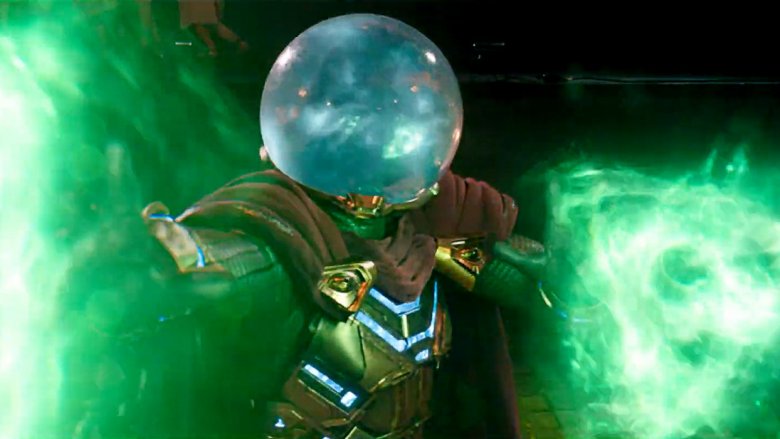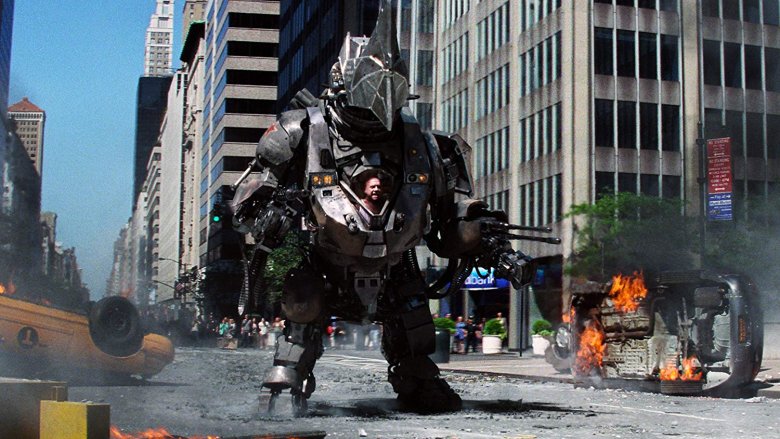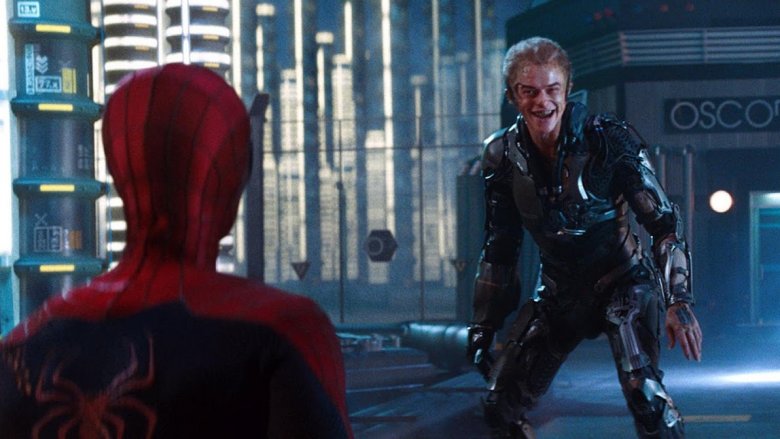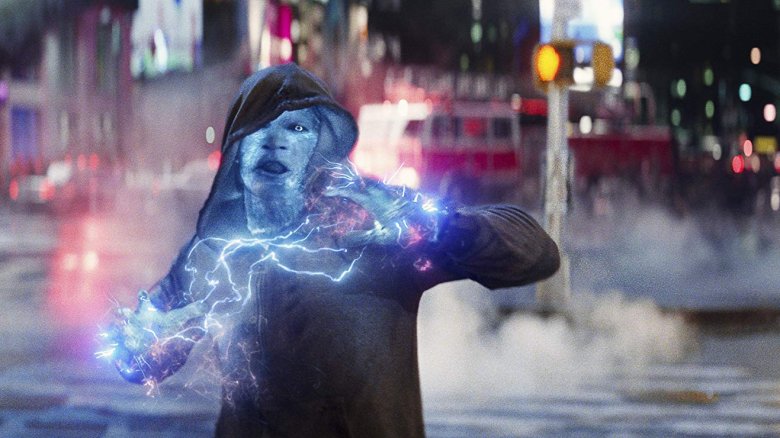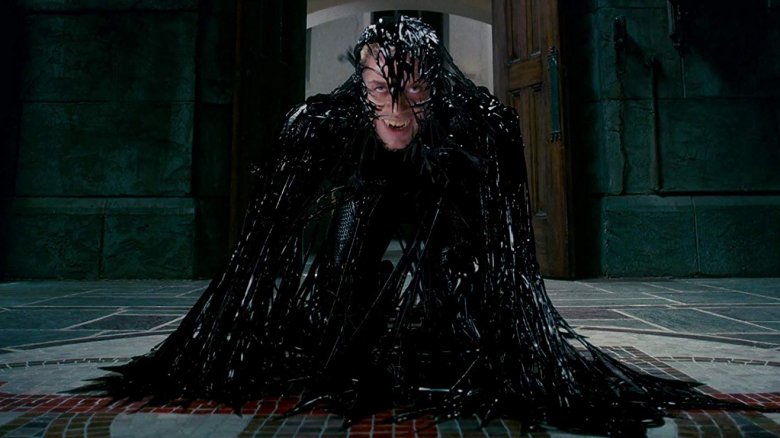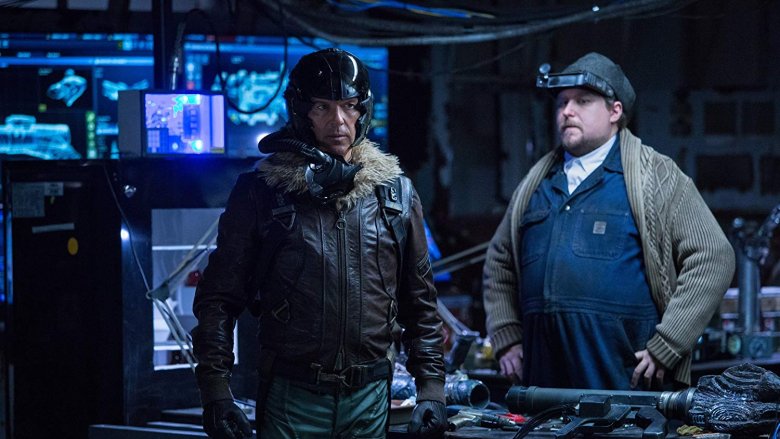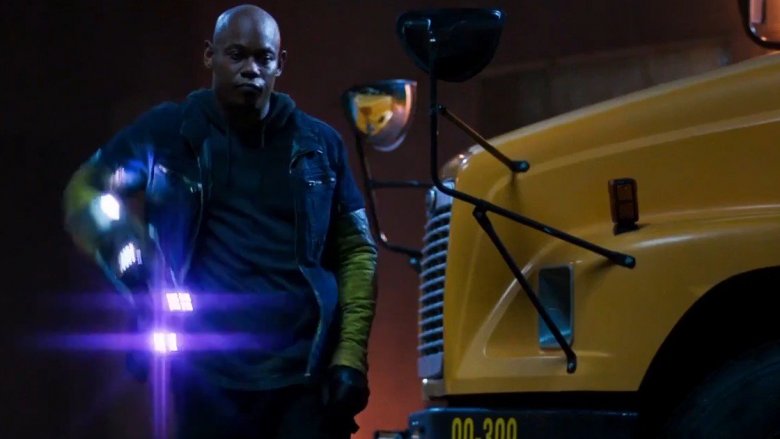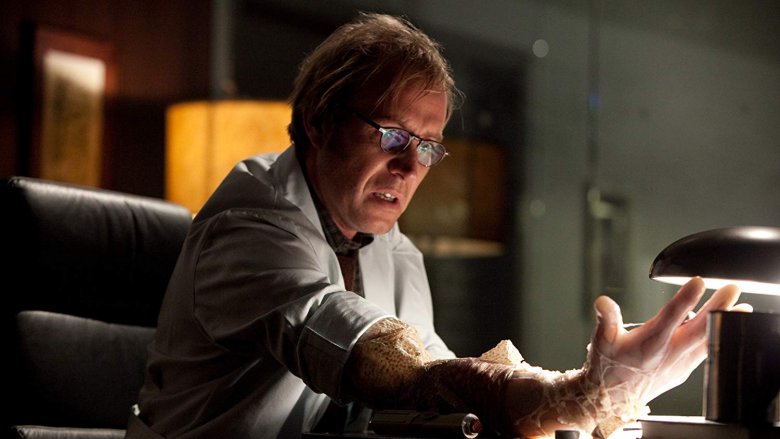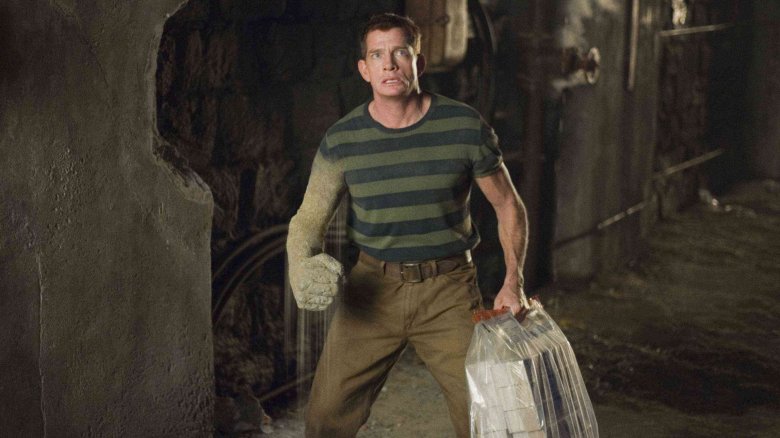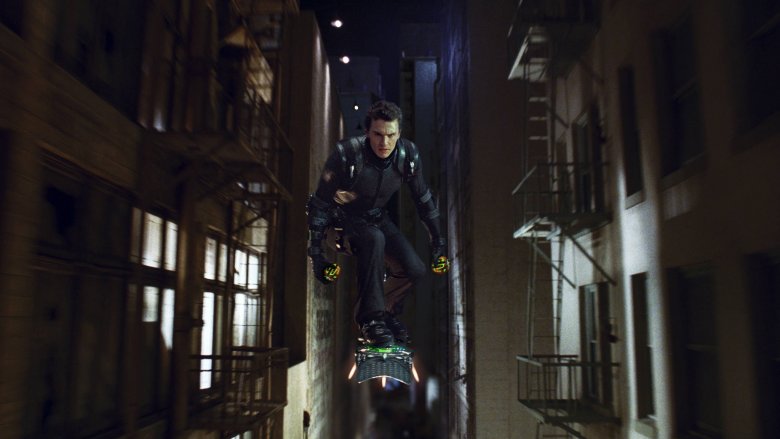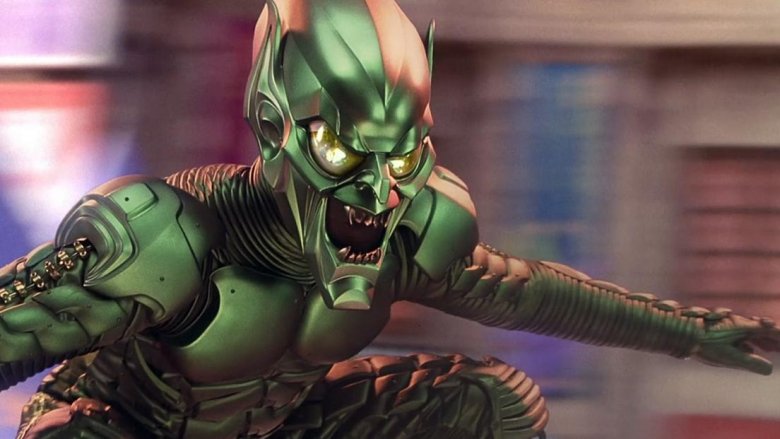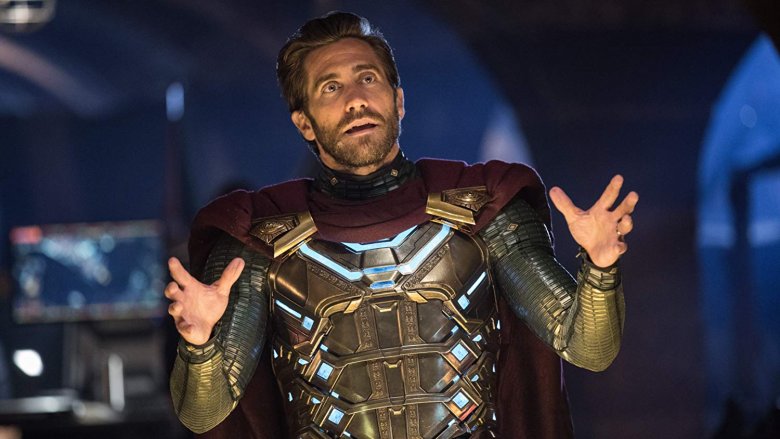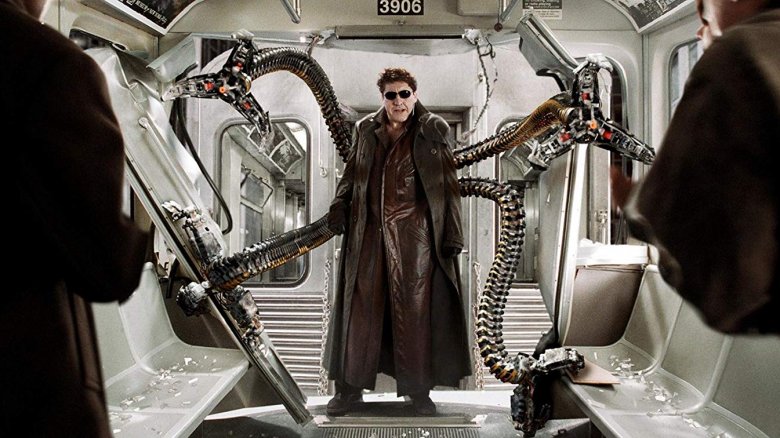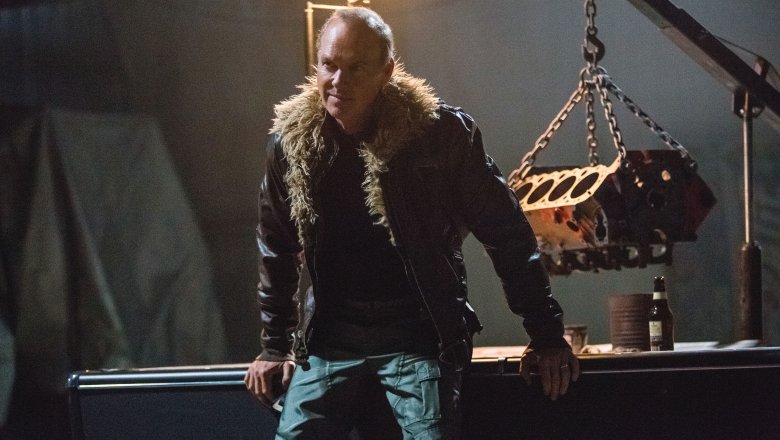Spider-Man's Live-Action Movie Villains, Ranked Worst To Best
Spider-Man has appeared in 10 big-budget live-action blockbusters in less than two decades, including seven films in which he's the star whose name is in the title. That's more movies than Batman or Superman, and it's a legacy further complicated by the fact that the films have, since 2002, covered three different timelines with three different actors in the leading role. The point is that there are a lot of Spider-Man movies out there, and that means a lot of Spider-Man villains. With that in mind, we're taking a look back at the many, many supervillains Parker's already battled and seeing how they stack up against each other, up to and including Spider-Man: Far from Home's Mysterio.
For the sake of clarity, we're keeping animated villains out of this list for now. We're also only using villains who appear in some direct way as their comic book supervillain selves, so characters who cameo as potential future bad guys are out. We're also not including J. Jonah Jameson because, well, we like him too much.
Rhino (The Amazing Spider-Man 2)
The Amazing Spider-Man 2 is, even more than Spider-Man 3 before it, an overstuffed, trying-too-hard movie that banks on interconnectivity to help drive excitement for a sequel that ultimately never came. At the time, Sony Pictures was attempting to push ahead with its own cinematic universe with Spider-Man at the heart. When it didn't work, we ended up with Spider-Man in the MCU, but watching this film now is still an amusing exercise in watching someone try to build a universe that never quite comes together.
Rhino is, sadly, a victim of this crumbling effort. The film had Paul Giamatti playing a Russian gangster who's ultimately outfitted in a mech suit, and Giamatti clearly relished chewing up as much scenery as he possibly could in the role. Sadly, the film wastes his character because there's just not enough room for more than a couple of scenes. He might've had more to do in the sequel, but here he's largely an example of a wasted opportunity.
Green Goblin (The Amazing Spider-Man 2)
Sam Raimi's Spider-Man trilogy gave us not one, but two Green Goblins in a very memorable way, so if any film was going to try and use the villain again so quickly, it was going to have to nail it. The version of the Goblin who shows up in The Amazing Spider-Man 2... does not nail it.
The character is a perfect example of the problem the film develops when it pushes ahead for universe-building while sacrificing any real sense of longterm storytelling. We've never met this version of Harry Osborn (Dane DeHaan) before, but we're told he's got a connection to Peter going back years, and he was just off at boarding school. We haven't seen the toll his genetic illness is taking on him, but we're told it's bad and we should care. We haven't seen any real development in terms of Green Goblin tech, but we're shown it all packaged and ready for Harry to dive in.
This lack of real investment, combined with a grim, ultimately uninteresting look for the character, makes this the most forgettable version of Green Goblin on the big screen so far.
Electro (The Amazing Spider-Man 2)
Making Electro the primary villain of Amazing Spider-Man 2 was a good idea on paper. It's a character the Raimi films never really got a chance to play with, he's got a cool powers that can manifest themselves in interesting ways visually, and he was played by Jamie Foxx, who offered up a version of the character quite different from what we were used to seeing on the page. Then the movie came out and, well, Electro just didn't quite land.
It wasn't necessarily Foxx's fault. He seemed to do the best he could with the material he had, and even Electro's glowing blue hoodie look had something going for it. The character's motivations (which ultimately become about controlling everything through electrical manipulation) get lost in the shuffle of everything else the film is trying to do, and the manifestations of his powers ultimately take the form of something that sounds alarmingly like dubstep. By the time Electro is somehow actually playing music with his powers at the end of the film, he's lost any goodwill he had before.
Venom (Spider-Man 3)
In 2018, Sony released a whole movie explaining Venom's deal, and even that film left us with plenty of questions that the studio is now going to try to pick through for upcoming sequels. Venom is a lot, and introducing him into any film as a Spider-Man antagonist has the potential to be very tricky business. The way Spider-Man 3 ultimately does it — a "right place, right time" moment when Eddie Brock just happens to merge with the symbiote — works fine as a catalyst for the film's climax, but allows very little room to really let us get to know this particular version of the villain and how he works. It's basically just "Eddie Brock hates Peter Parker, gets alien monster powers, and then fights him." There's no time to dig into what the relationship to the symbiote is, or exactly why Eddie gives in so quickly, or if there's even any real humanity left in him. This version of Venom is a fight scene, and while the fight scene actually works fine, that's a bit of a shame.
The Tinkerer (Spider-Man: Homecoming)
Spider-Man: Homecoming, the first solo Spider-Man adventure in the Marvel Cinematic Universe, is a great example of a film that knows how to juggle multiple villains without overwhelming the piece — it introduces a main villain and some secondary antagonists, but allows them to work together form the start rather than generating some sort of contrived team-up. That means that, while Vulture does the heavy lifting as the film's chief bad guy, his crew back at headquarters fits into the story in an organic and entertaining way.
The Tinkerer doesn't rank super highly on this list simply because he doesn't have that much to do in the film. He is to the Vulture what Ned is to Peter: The guy in the chair, manipulating tech and communications behind the scenes while the big guy does the fighting. Because of that, he's not a heavy hitter within the Spider-Man films, but he's certainly entertaining in the space he's given. The film manages to breathe some real life into him by making him a nosy, somewhat strange guy who's just happy to have a gig where he can be a huge tech nerd, and that's fun to watch.
The Shocker (Spider-Man: Homecoming)
The economy of storytelling in Homecoming is so great that the film manages to fit in not one, but two versions of the Shocker, a guy who in the comics is a lesser Spidey villain to such an extent that he's very often the subject of ridicule. In this film, he becomes another employee of the Vulture who's gifted with gauntlets that emit tremendous energy when they make contact with someone or something, which are used to great effect in the character's few fight scenes. The first Shocker, Jackson Brice (Logan Marshall-Green), relishes the idea that he can have a self-given code name and go around punching things with his new toys, which allows the film a moment to mock the very idea of a guy who's happy to be called "The Shocker." When the second Shocker (Bokeem Woodbine) gets hold of the gauntlets, things become much more businesslike, and the deliberate, calculated way in which he tries to pick apart Peter Parker is actually rather chilling. Together, they present a portrait of a minor supervillain that adds plenty to the film while never getting in the way of Vulture's spotlight.
The Lizard (The Amazing Spider-Man)
The Amazing Spider-Man wisely started its new Spidey universe by picking a villain who'd only been hinted at in the Raimi films in the form of a supporting character. We'd seen Dr. Curt Connors — Peter Parker's one-armed scientist mentor — before, but we'd never seen him transformed into a monster by his own scientific hubris and desperation. The fact that the character was in the Raimi films created a sense of excitement among fans who were finally going to get to see the Lizard, while never quite feeling like the new film was retracing the steps of the old one.
As portrayed by Rhys Ifans, Dr. Connors takes on a certain kind of quiet strangeness that permeates the early scenes. You get the sense that he's a man who's thought far too much about things he perhaps shouldn't be tinkering with, and as his slow transformation begins, Ifans leans into that strangeness even more to create a villain who's both threatening and sympathetic. He's the best villain in the Amazing universe by far.
The Sandman (Spider-Man 3)
The decision to make The Sandman (Thomas Haden Church) a major villain in Spider-Man 3 is an interesting one, particularly when you consider all the other things the film is trying to do with Peter Parker's emotional journey. The decision to make him the guy who killed Uncle Ben offscreen in the first film further complicates this in ways that neither the film nor the Spider-Man mythos really need. Isn't the point of Spider-Man's journey that he now has a responsibility to fight crime and help people because a faceless, random man gunned down his uncle due to his inaction? Isn't that emotional impact heightened by the anonymity of it all?
Despite this, this version of the Sandman works because of the parallels the film draws between him and Peter. They're both men with strange powers they didn't ask for, pushed into darkness by circumstances beyond their control and hoping to atone for their past mistakes. Church plays the character, whose life of crime was motivated by a family in need, with real heart, and his final scene — in which he and Peter compare notes and agree to try and redeem themselves — is one of the most powerful moments in a flawed film.
Green Goblin 2 (Spider-Man 3)
Spider-Man 3 could have been a film entirely about the rise of a second Green Goblin and Harry Osborn's grappling with his own inner darkness in parallel to Peter Parker wrestling with the Symbiote, and it probably would have still been a fulfilling movie jam-packed with things to figure out. As it is, we got a film that attempted to juggle three different villains and cram them all together into a final fight scene, so Harry Osborn's final journey in the Spider-Man trilogy kinda got crammed in.
Still, Harry's decision to become the second Green Goblin in an effort to avenge his father, only to eventually seek redemption when he realized Spider-Man was not to blame for his family's downfall, is a rewarding one. It doesn't always work, particularly when Harry (and by extension, James Franco) has to turn on a dime between hero and villain in various scenes, but the two preceding films add a real weight here that makes it all pay off despite being underserved by the script.
Green Goblin (Spider-Man)
Sam Raimi made a lot of solid casting decisions when he set out to begin his Spider-Man trilogy, but at least two of them go beyond solid and into the realm of perfect: One is J.K. Simmons as Daily Bugle editor J. Jonah Jameson, and the other is Willem Dafoe as Norman Osborn, a.k.a. the Green Goblin.
Dafoe is having so much fun with the role, years before character actors would begin competing for supervillain roles left and right, that his sense of instant joy at being immersed in the comic book world is infectious, even in a way that Tobey Maguire's isn't. Maguire gets much more time to sell his journey as Spider-Man, while Dafoe has to transform into full supervillain mode a good deal faster. He makes it work, and it leaps off the screen.
It does so even in spite of the film's shortcomings in its treatment of the character, something that's particularly obvious in the costume design. The decision to forgo an expressive face for the character in terms of a constantly fang-bearing mask might have made sense in 2002, but now it makes the scenes with Spider-Man and the Goblin look a bit too much like action figures yelling at each other. Even in those moments, though, Dafoe's voice carries the performance.
Mysterio (Spider-Man: Far From Home)
Spider-Man: Far from Home had to follow a lot of different, very tough acts, just one of which was Michael Keaton's performance as the Vulture. The decision to make the next villain Mysterio, another newcomer to live-action Spider-Man, was a welcome one, and fans seemed to immediately get behind the decision to cast Jake Gyllenhaal in the role of a guy who relishes creating an illusion to hide under.
Gyllenhaal gets a lot of meaty stuff to play with in the film, from the idea that he first presents himself as a hero from another dimension to the revelation that he's a scorned former employee of Tony Stark. The early, more heroic scenes work great, but the turn is where Gyllenhaal really shines. Once the gloves are off and he's in full supervillain mode, he's having the time of his life, and so are we. He doesn't quite rise to the heights of the very best live-action Spider-Man villains, but he's very close, so much so that even after Far From Home you can't help but feel hungry for more of him.
Doctor Octopus (Spider-Man 2)
With a few notable exceptions (like those organic web shooters), Sam Raimi's Spider-Man films are often defined by their aesthetic and structural devotion to the Marvel Comics book they're based on, but the key to the best of these films is the way in which they know exactly how to deviate, and when. With Spider-Man 2, we got the best of both worlds in Doctor Octopus: A guy who looks and moves exactly how we'd expect the comic book version to, but who has the added gravitas of a good man corrupted by his own creation.
Alfred Molina is flawless as Dr. Otto Octavius, a guy who's hoping to change the world whose brain is infected by the artificial intelligence in his robotic extra arms after a horrible accident. Riddled with guilt and grief, Molina plays the disintegration of the character perfectly, then manages to guide him back to redemption with the same sense of vulnerability and delicate emotional resonance. It's a great performance in a great comic book movie.
The Vulture (Spider-Man: Homecoming)
Sometimes Spider-Man stories are at their very best when they take a very simple, easy-to-follow metaphor and translate it into the big, bold strokes of a superhero story. In that way, Spider-Man: Homecoming is a story about Peter Parker finding out his girlfriend's dad is a jerk, and the jerk in this case is played to perfection by Michael Keaton.
There's so much to love about the Vulture in Homecoming, from the look of the character to the way Keaton plays him as a working class guy who simply got tired of being pushed around and decided to take matters into his own hands for the sake of his family. There's no nonsense here, but there are tricky emotional turns to make, and Keaton manages them all by being equal parts charming and terrifying. The scene in which he has a private moment with Peter in his car is among the best things in any Spider-Man film, and the fact that his character actually has a point about the way regular people are pushed down in an increasingly strange world only adds to his impact. It's a brilliant, layered performance that's going to be hard to top.
